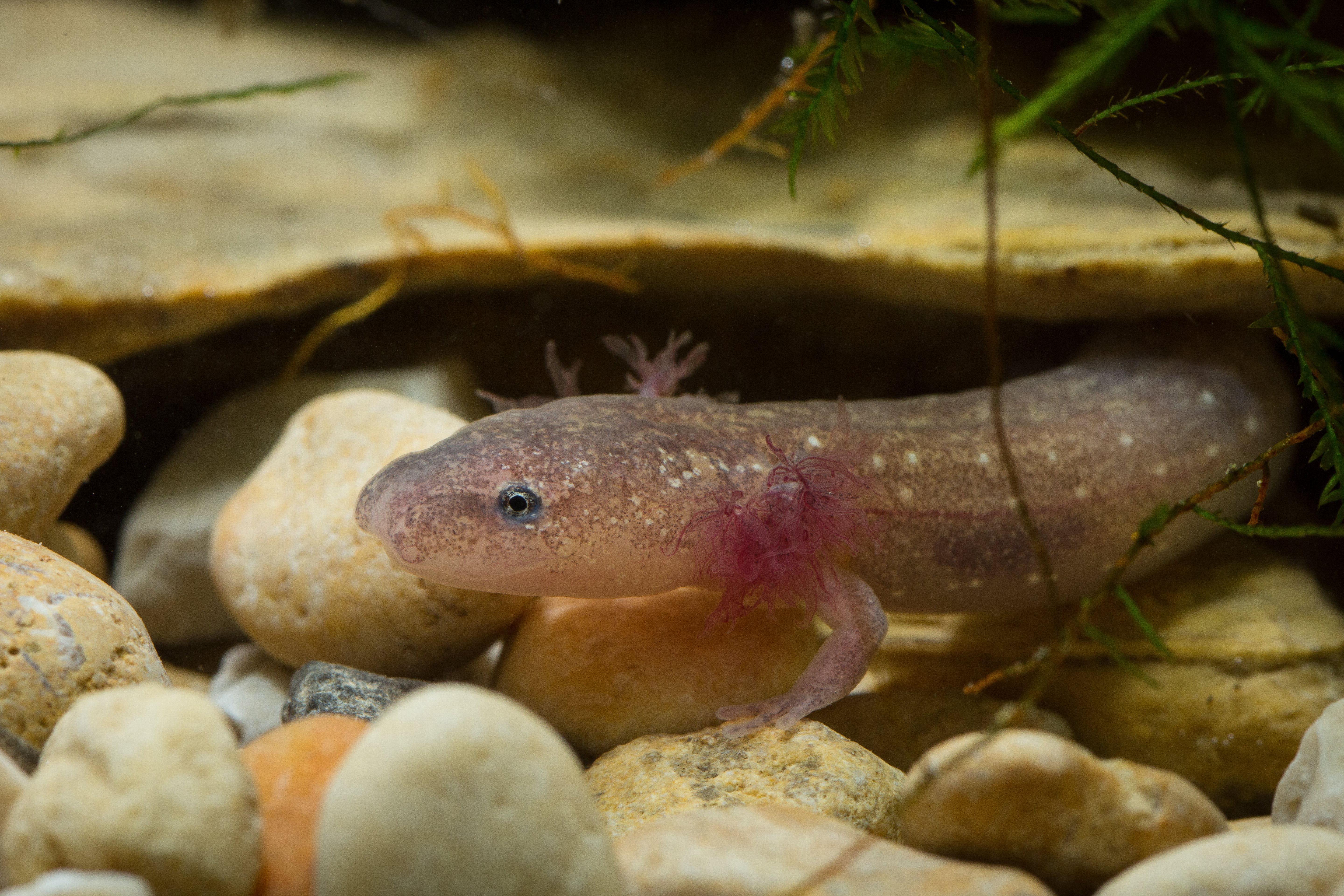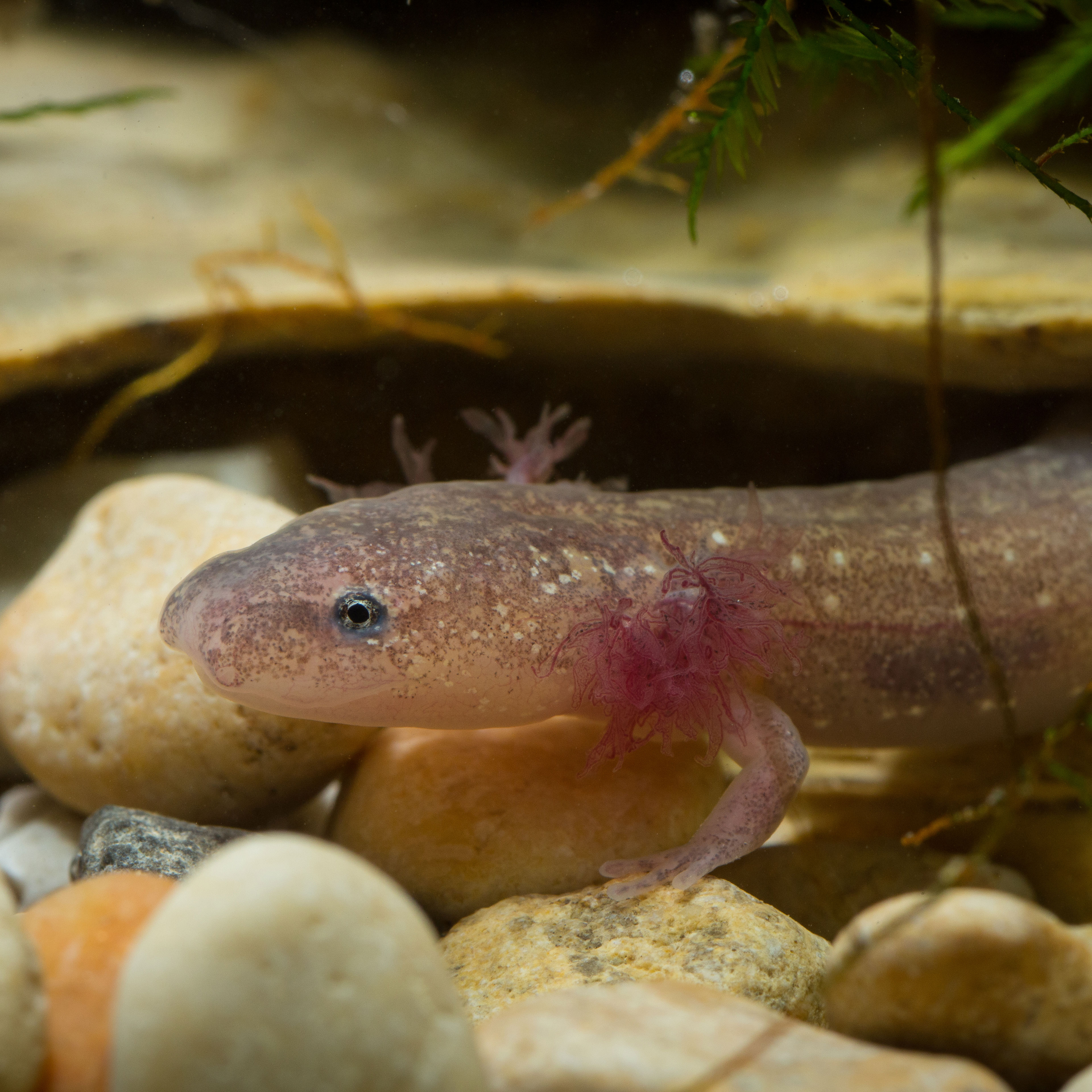The Salamanders in the Springs are the Canary in the Coal Mine | Austin
A highly-endangered salamander finds a home in a fast-growing city.
Rare creatures are lurking at the bottom of Austin’s favorite swimming hole.
Barton Springs Municipal Pool, which draws hundreds of thousands of human visitors each year, is also home to a unique amphibian known as the Barton Springs salamander.
The species is believed to have one of the smallest ranges of any vertebrate in North America, living only in the four natural pools that make up Austin’s Barton Springs, along with the underground aquifer that feeds the springs.
“That’s part of the beauty of it,” said City of Austin Watershed Protection Department Senior Environmental Scientist Nathan Bendick. “You have this natural place where you can have people go and swim above the habitat of this endangered, beautiful animal that exists right underneath their feet.”
While most amphibians lose their tails and gills as they morph from tadpoles into adults and move from water to land, Barton Springs salamanders maintain their gills. This allows the species to spend its entire life underwater – and even in the underground aquifer.
Because few Barton Springs salamander eggs have been discovered aboveground in the springs, it appears that they reproduce in the aquifer. In fact, it seems that the salamanders might actually spend a large portion of their lives down there.

“The salamanders move in and out of these spring outlets in the aquifer, and my guess is they’re probably coming to the surface to feed,” said City of Austin Watershed Protection Department biologist Dee Ann Chamberlain. “We don’t know the distribution of the salamanders throughout this segment and how deep they go. We have so many questions about their life in the dark of the aquifer and the abilities of these little animals to live in that environment. It would be nice to have a little salamander cam so you could see what goes on.”
The petite, Barton Springs salamander – which measures only a half-inch to 3 inches long – has been on the endangered species list since 1997, and its existence still remains in jeopardy. With Austin’s population growing exponentially, urban expansion is posing a major threat to the water quality in the Barton Springs segment of the Edwards Aquifer.
Since the aquifer is fed by rainwater, what happens aboveground is critical to the health of the aquifer and, in turn, to the salamanders.
When urban runoff enters the watershed, toxic sediment containing heavy metals and pesticides can make the water uninhabitable, both for the salamander and the species it eats, such as small insects and freshwater crustaceans. In addition, sediment can clog the spaces between the rocks where the salamanders live, pushing them out of their homes and sucking the oxygen out of the water.
In order to protect land above the aquifer from being developed in ways that could pollute the aquifer, the City of Austin passed the Save Our Springs Ordinance in 1992. The ordinance includes development restrictions on impervious cover, such as streets, sidewalks, driveways, and rooftops, all of which can increase toxic runoff from rainfall.
“The natural landscape soaks up rainfall like a sponge and delivers the water out over time,” said Save Our Springs Alliance Executive Director Bill Bunch. “Impervious cover does two really bad things for a watershed. First, it blocks the rainfall from seeping through the ground and becoming base flow, and instead, it hits that pavement and rushes off, so you get increased flooding and increased downstream erosion. It’s boom and bust, and they’re either raging storm or they’re bone dry. Second, the pavement is a highly efficient collector of the pollutants that we generate as people – trash, pet waste, automobile droppings, fertilizers, pesticides.”
As Austin’s metro region continues to expand into adjacent jurisdictions, new low-density suburban subdivisions are being built on watershed lands where there are less- protective building ordinances. Although some of these developments are located dozens of miles from Austin’s city limits, runoff can still find its way into the aquifer through networks of sinkholes and caves.
“It’s like a giant funnel,” Bunch explained. “Everything that runs off these streets collects in the creek, goes down to the aquifer, and comes out in the springs. What happens here, happens at Barton Springs.”
Since 1998, the City of Austin has tried to preserve the watershed by buying and managing suburban real estate as Watershed Quality Protection Lands. These natural areas are preserved and restored in order to maintain the natural flow of water into the aquifer. Using tax dollars from citizens, the city has purchased more than 28,000 acres of land to date.
“Citizens didn’t really have any assurance that this land could be protected forever, especially land that’s well outside the city’s jurisdictions,” said City of Austin Water Quality Protection Lands Program Manager Kevin Thuesen. “So the idea was, this land is for sale, we have landowners who are willing to sell us their development rights, and the mission was created to find a way to buy these lands. So citizens voted on it to say, ‘Yes, use our money for this purpose. We want to protect Barton Springs enough that we are willing to tax ourselves to do it.’”
— Sean Keenehan






